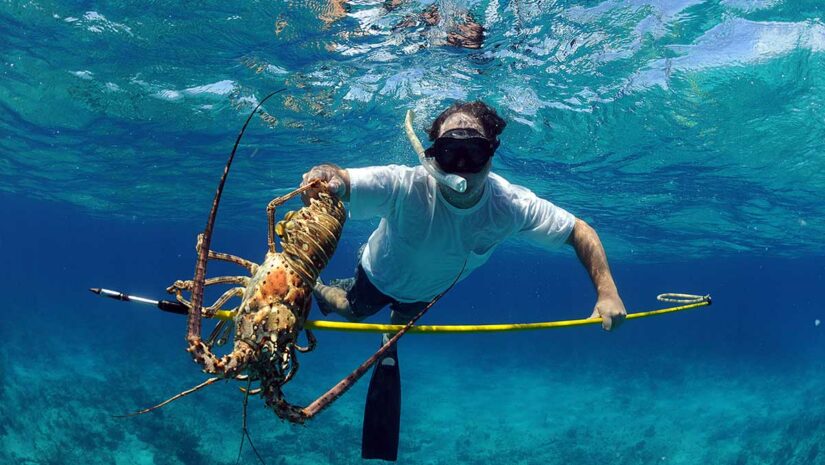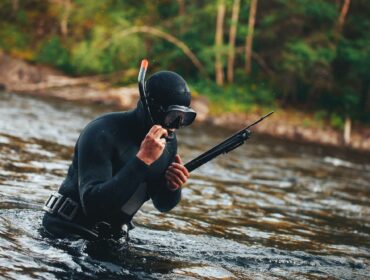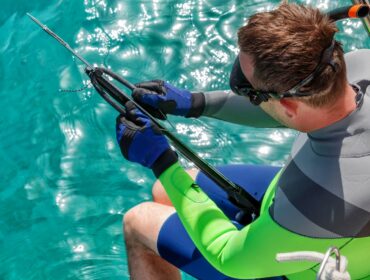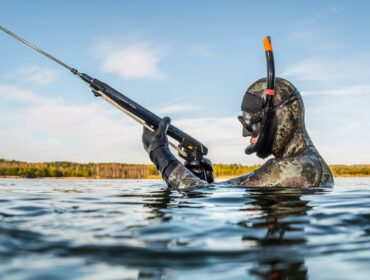One of the most widely used weapons in spearfishing is the Hawaiian sling, which is often confused with the pole spear. These two are extremely popular as they are much more affordable compared to spearguns, plus they are also highly accessible—so much so that you can even DIY one if you have the right tools and materials.
But of course, if you want a really good quality weapon, you’ll find many different kinds of them in dive shops, fishing shops, and even online.
The terms Hawaiian sling and pole spear are often used alternatively to describe the same thing, which is basically a sharp-ended spear (sometimes with three prongs) that is used to hunt fish. What many don’t know is that they are actually two different pieces of spearfishing equipment.
To better understand what Hawaiian slings or pole spears are, we’ll briefly discuss their distinctions and similarities, as well as how they are used in spearfishing.
What is a Hawaiian sling?
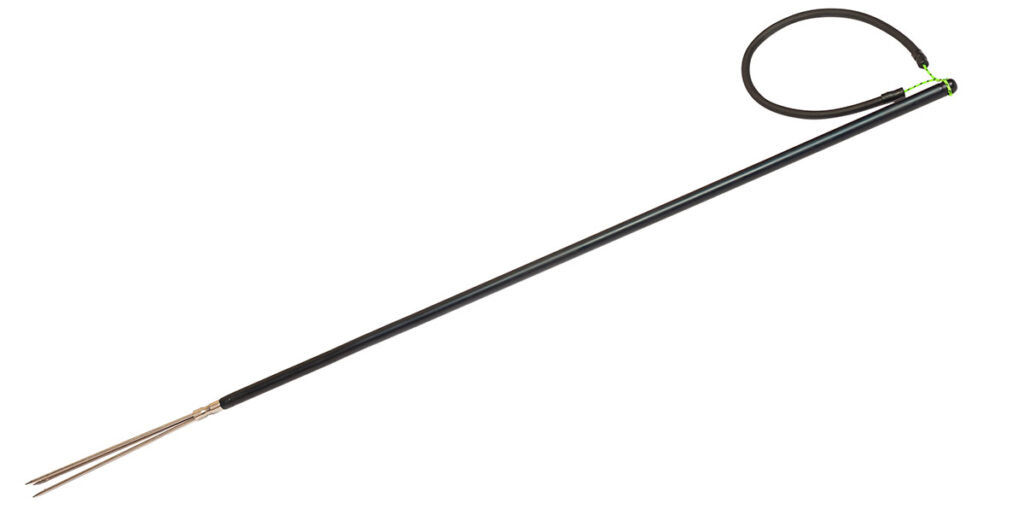
A Hawaiian sling is used in spearfishing and traditionally is made from lightweight wood or bamboo. There are other models made of synthetic materials or dry rubber. The wood is drilled to hold the spear, and a rubber band is held tightly to propel the spear forwards to spear fish. The Hawaiian sling is considered one of the most accurate ways to catch fish from a distance. There are no shooting lines involved with a Hawaiian sling and it is perfect for catching big fish and lobsters. Most Hawaiian slings are between 60 and 75 inches long and are easy to maneuver.
How do you use a Hawaiian sling?
The Hawaiian sling works similarly to a bow and arrow. To use a Hawaiian sling, you plug the shaft into a hole in the rubber band and hook it into a loop. Then, you have to pull the shaft back to load it with the spear. The power in the rubber band propels the spear towards your target.
The Hawaiian sling is very fast and powerful, it will penetrate the fish easily and kill it quickly. To use the Hawaiian sling, first put the sling in your sling hand, wrap your fingers and thumb around the middle part of the sling. Next, insert the shaft through the sling into the cup at the back of the band and pinch it with your thumb and index finger, and wrap your fingers around the rest of the cup.
Once you’re in the water, remove the cup and band from the shaft, bring your hand back fully while keeping the shaft aligned with your jaw or cheek, and release.
While it’s relatively easy to use, as with any weapon, you’ll need to practice to get better at it.
What is a pole spear?
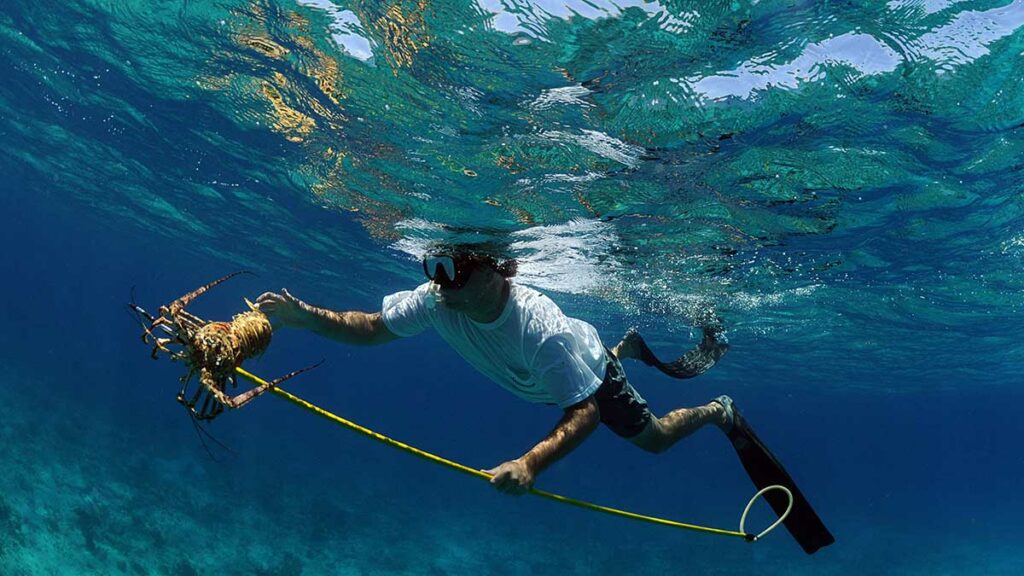
A pole spear is also used in spearfishing and consists of a pole, a spear tip, and a rubber loop. The rubber loop is attached to the end of the spear. The pole is usually between four feet to ten feet long. The pole is usually made from fiberglass, carbon fiber, aluminum, graphite, or wood. Longer versions of pole spears often break down into two or more pieces that can be attached together. The tip is either threaded to accept different kinds of spear tips, or it might already have a fixed tip attached.
How do you use a pole spear?
The pole spear is used by first placing the rubber loop in the crook of your thumb, then you reach up the spear shaft and stretch the rubber band and grab the pole spear to hold tension in the band. To shoot the spear, you release the grasp of your hand while using the hand to guide the spear.
The firing distance of a pole spear can be decided in two ranges. First, there is the overall distance of the stretch (the travel range). The second range is the distance that most like to shoot, as it is more relevant to penetrating fish. It is therefore called the “penetrating range.” Not all pole spears have the ability to penetrate through the fish. Depending on things such as mass, drag, band strength, and band stretch of the pole spear, the penetrating range can be from a scant few inches to several feet.
See the pole spear in action:
Hawaiian Sling vs Pole Spear: What’s the Difference?
If you’re one of those people who have long been confused between these two, let us clear it up for you. Hawaiian slings and pole spears are somewhat similar in that they both make use of a sling or band to fire the spear shaft, but there are some key differences in their appearance and how they are operated.
While the two essentially work in the same way, the Hawaiian sling makes use of a shooter, which is traditionally made of wood, that uses a high-powered rubber strap to fling a spear shaft forward—similar to a bow and arrow. To keep the shaft in place as you prepare to shoot, the tubing features a connector or spear holder where you can attach the end of the spear.
The pole spear, on the other hand, has a heavy-duty sling or band attached at the end for launching and interchangeable tips (also called spear tips or spear heads) that you can switch out depending on the environment you’ll be hunting in or the type of fish you want to catch. These weapons are usually made of fiberglass and come in varying lengths.
Either one is great for beginners to spearfishing. However, they also make great supplementary weapons for more experienced hunters. Freediving spearos who prefer to use spearguns often bring a Hawaiian sling or pole spear as a backup weapon. They sometimes attach it to their spear float so that when something happens to their guns, they can simply retrieve the sling or pole spear and continue hunting.
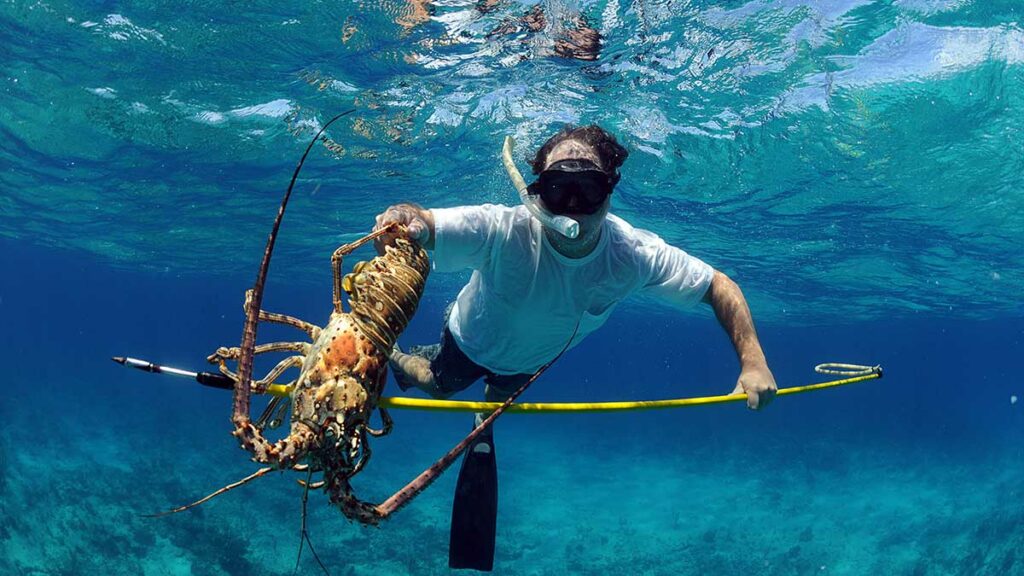
Hawaiian Sling vs Pole Spear: Which One Should You Use?
Both kinds of manual spearfishing weapons are fairly easy to use. Hawaiian slings and pole spears are both great for beginners. Both tools are known for being lightweight, but in general, the Hawaiian slings are a bit more lightweight. This might be a factor to consider if you like to travel light and you like to have more ease of movement underwater. As Hawaiian slings tend to be longer and more powerful, they are more suited for shooting larger fish at a further distance. So consider which fish you will be hoping to shoot before buying a Hawaiian sling or a pole spear.
The choice also boils down to the spearo’s hunting preference and skill. Some prefer the Hawaiian sling as it has a better range and is more fun to shoot, plus it offers a much better grip. Meanwhile, others find the thicker pole spear to be more effective in impaling fish in deeper water.
Whichever you end up choosing for your next spearfishing trip, just make sure you’ve had enough practice in shallow waters. Before you shoot, wait until you’re at least six feet away from your prey to ensure greater accuracy—but not too close so you don’t end up scaring it off. With enough practice and experience, it will be much easier to estimate how close you need to be to ensure your spear’s efficiency and accuracy.
Finally, make sure your choice of weapon is allowed where you’ll be spearfishing—and don’t shoot it where you can’t retrieve it!

